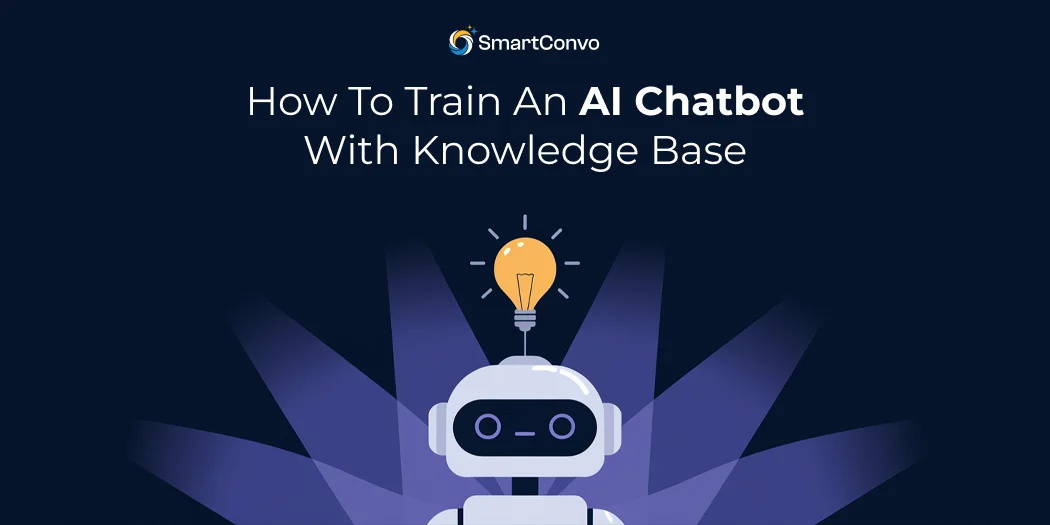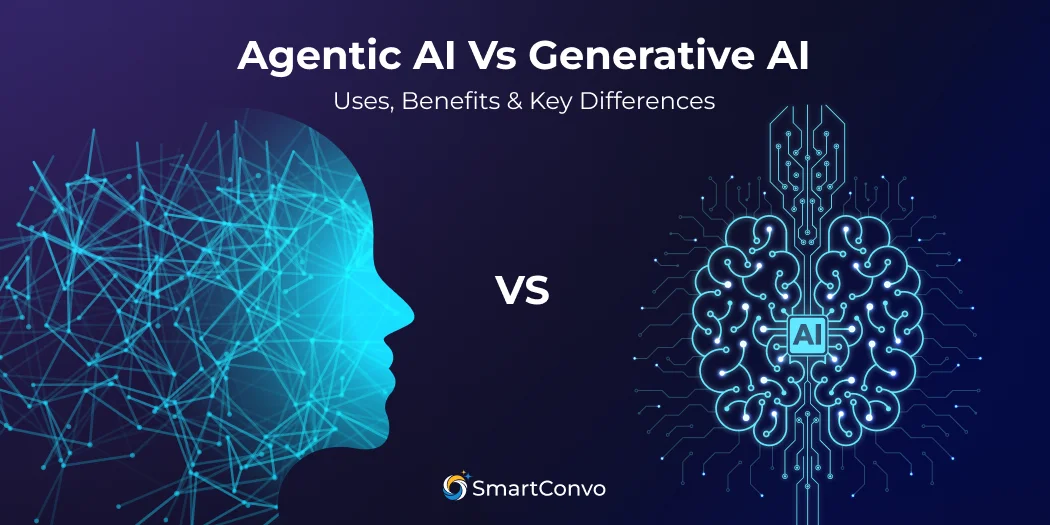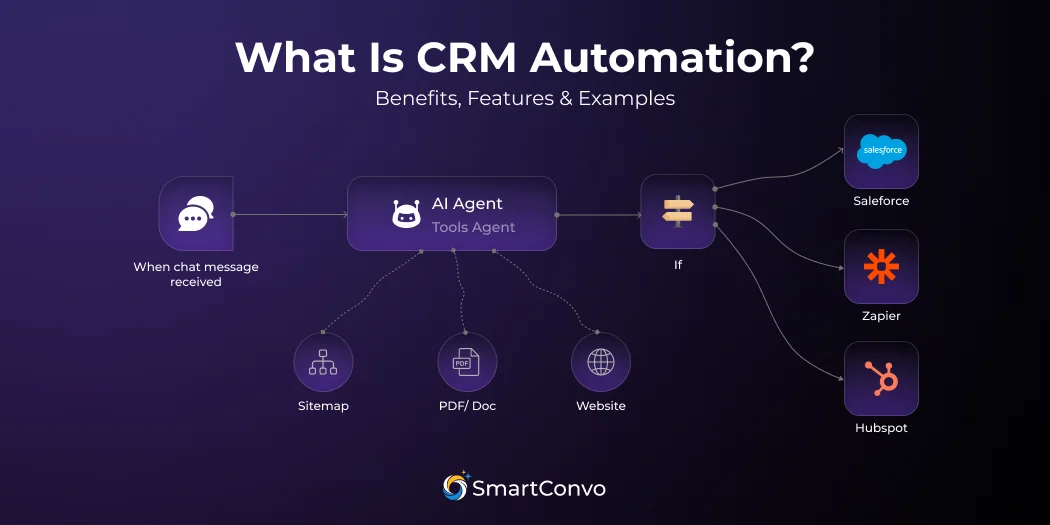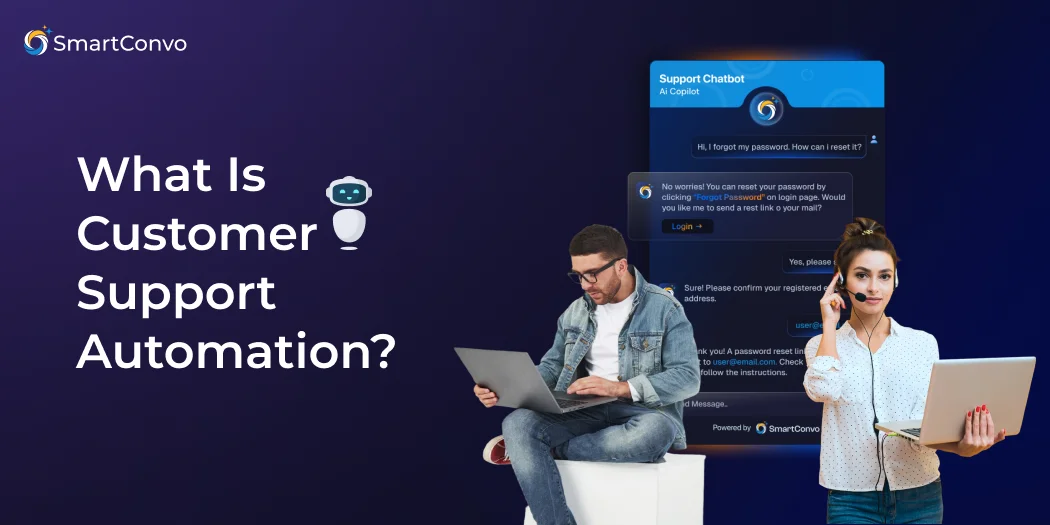The world of customer service is evolving rapidly, and businesses are increasingly turning to AI chatbots to enhance efficiency, improve customer satisfaction, and reduce costs. These smart tools have the potential to revolutionize the way companies interact with their customers, providing instant responses, 24/7 availability, and the ability to handle multiple queries simultaneously. However, not all chatbots are created equal, and their effectiveness largely depends on how well they are trained.
To truly maximize the potential of an AI chatbot, training it with a robust knowledge base is essential. A chatbot with knowledge base acts as the foundation of the chatbot’s understanding, enabling it to deliver accurate, relevant, and helpful answers to customer inquiries. This training process involves feeding the chatbot comprehensive, up-to-date information about your products, services, company policies, and frequently asked questions, ensuring it can efficiently address customer needs.
What Is a Knowledge Base?
A knowledge base is a centralized repository of information designed to help users, employees, or customers easily find answers to common questions. It can include FAQs, user manuals, troubleshooting guides, training materials, and other helpful resources—all organized and searchable in one convenient location. By offering quick access to relevant information, knowledge bases empower users to solve problems independently without waiting for assistance.
For businesses, a well-structured knowledge base saves time and improves efficiency by reducing repetitive inquiries and freeing up support teams to focus on more complex tasks. An AI knowledge base chatbot enhances this process by providing instant, automated responses, ensuring critical information is always accessible 24/7. Whether it’s for onboarding new employees, assisting customers, or streamlining internal processes, this technology plays a crucial role in improving productivity and customer satisfaction.
What Is an AI Chatbot?
AI chatbots are conversational agents powered by artificial intelligence, designed to simulate human-like interactions. By leveraging natural language processing (NLP) and machine learning (ML) algorithms, these chatbots can understand user input, determine intent, and deliver relevant and accurate responses. They analyze text or voice inputs from users, learning over time to improve their accuracy and effectiveness.
AI chatbots are particularly valuable for automating repetitive tasks, such as answering frequently asked questions, providing customer support, or guiding users through processes. They can also handle multiple queries simultaneously, making them an efficient tool for businesses looking to enhance user experience and streamline operations. From recruitment to employee support, HR chatbot is transforming the way organizations manage human resources and engage with their workforce.
How Do AI Chatbots and Knowledge Bases Work Together?
When you integrate a knowledge base with an AI chatbot, you empower the chatbot to deliver quick, accurate, and relevant responses by pulling information directly from the knowledge base. Think of it as the chatbot’s brain—packed with critical information to streamline operations and improve customer experience.
AI chatbots come in various forms, depending on their level of complexity and functionality.
Types of AI Chatbots
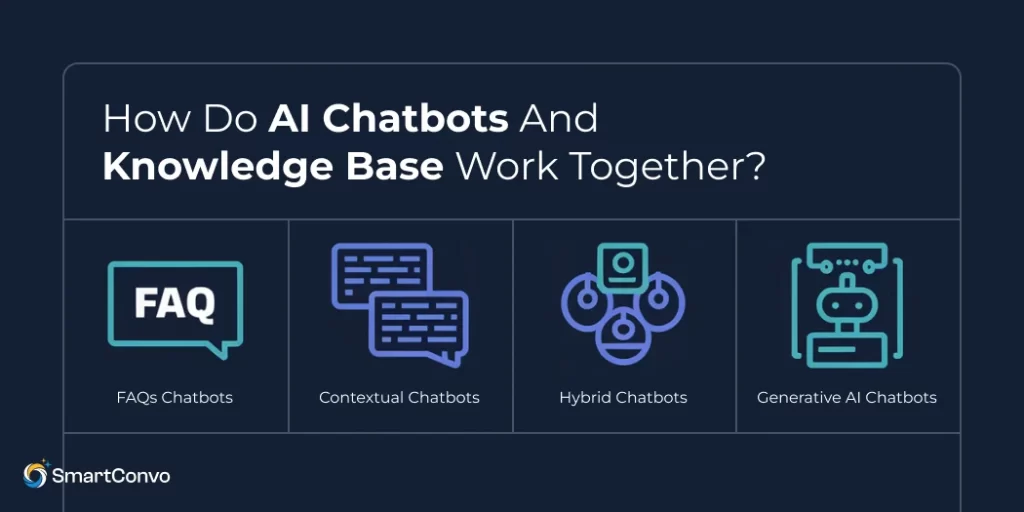
1. FAQs Chatbots
These chatbots are designed to answer common questions by retrieving information from a pre-set knowledge base, which is a collection of organized data and frequently asked questions. They are particularly useful for handling straightforward, repetitive queries, such as providing information about business hours, return policies, or basic troubleshooting steps. By automating these simple interactions, they save time for both users and customer support teams, offering quick and efficient responses.
2. Contextual Chatbots
Contextual chatbots utilize machine learning (ML) to analyze and understand user behavior, past interactions, and preferences. By leveraging this information, these chatbots can provide highly personalized and relevant responses tailored to the specific context of the conversation. This advanced understanding enables them to offer a more seamless and natural user experience, making interactions feel more human-like and efficient.
3. Hybrid Chatbots
Hybrid chatbots combine the efficiency of AI automation with the personal touch of human agents. They autonomously handle simple, repetitive issues like answering FAQs or processing basic requests, saving time and improving response speed. For more complex or sensitive queries, these chatbots seamlessly transfer the conversation to a live representative, ensuring customers get the support they need without frustration. This blend of technology and human interaction provides a balanced approach to customer service, enhancing user satisfaction while optimizing operational efficiency.
4. Generative AI Chatbots
At the forefront of conversational AI, these chatbots use advanced large language models (LLMs) like ChatGPT to not only retrieve information but also generate contextually appropriate and highly nuanced responses. By leveraging deep learning techniques, these models can understand complex queries, adapt to different conversational tones, and provide more personalized interactions, making them valuable tools across industries like customer service, education, and healthcare.
Why Integrate a Knowledge Base Into an AI Chatbot?
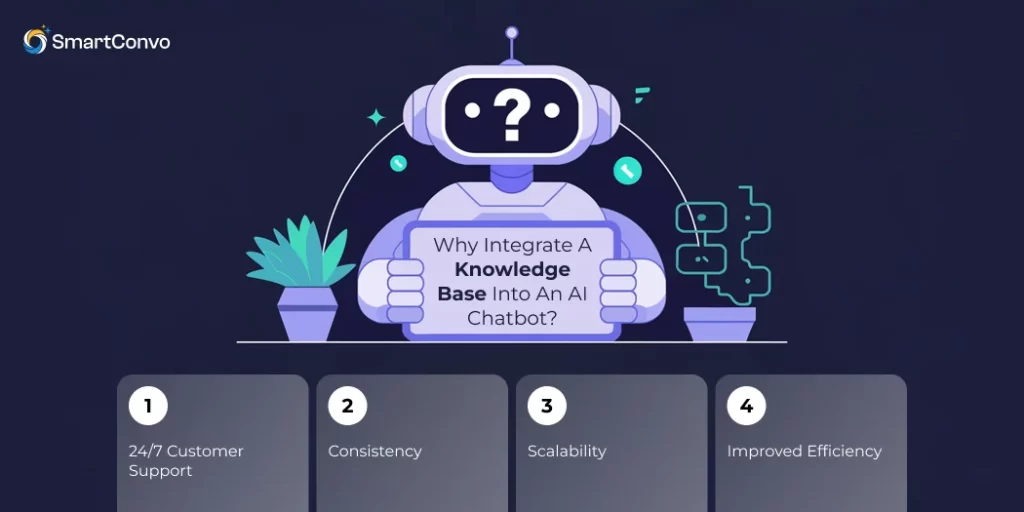
Before we jump into how to train AI chatbots, it’s essential to understand the benefits of pairing your chatbot with knowledge base. A knowledge base serves as a centralized repository of information that your chatbot can draw from to provide accurate, consistent, and detailed responses to user queries.
1. 24/7 Customer Support
AI chatbots never take breaks, making them the perfect solution for businesses looking to provide 24/7 customer support. Powered by a comprehensive knowledge base, these chatbots deliver immediate responses at any time of day or night, ensuring customers always have access to the information they need.
2. Consistency
Ever had two support agents give conflicting advice, leaving you more confused than when you started? This frustrating experience can be avoided with a chatbot powered by a centralized knowledge base. By pulling from a single source of truth, the chatbot ensures every response is consistent, accurate, and reliable, giving you the confidence that you’re getting the right information every time.
3. Scalability
Handling hundreds—or even thousands—of customer queries simultaneously? No problem. This powerful combination ensures seamless scalability, adapting effortlessly as your business grows. It allows you to manage increasing demands without the need to hire extra staff or invest in additional resources, saving you time and operational costs while maintaining exceptional customer service.
4. Improved Efficiency
By automating repetitive tasks such as answering frequently asked questions or scheduling appointments, you not only save time but also increase efficiency across your operations. This allows your team to focus on more value-driven activities, like building stronger customer relationships, brainstorming innovative ideas, and driving business growth.
Creating alignment between your chatbot and knowledge in AI ensures seamless customer interactions.
How AI Chatbot Training Works
When you train an AI chatbot, you’re essentially teaching it how to understand language, interpret intent, and provide relevant information to users. This involves feeding the chatbot large amounts of data, helping it recognize patterns in language, and fine-tuning its ability to respond accurately to different types of queries.
By combining this training with a well-structured knowledge base, the chatbot gains the ability to seamlessly access and retrieve data, ensuring it delivers helpful, context-specific responses. Over time, continuous updates and training can further enhance its accuracy and adaptability, making it an even more reliable tool for communication and problem-solving.
9 Steps to Train an AI Chatbot With a Knowledge Base
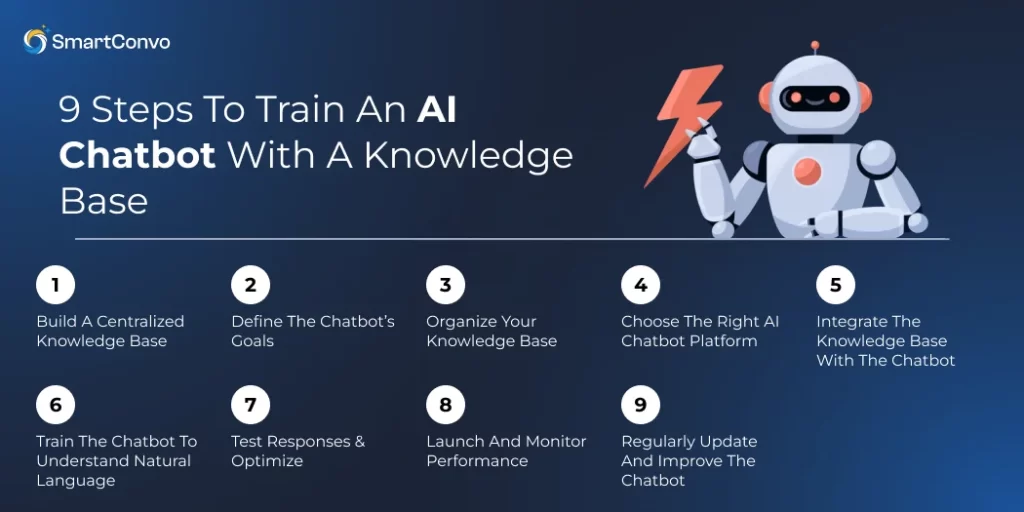
1. Build a Centralized Knowledge Base
Start by compiling all the resources your chatbot will need to effectively address customer queries. This should include a wide range of materials such as FAQs, instruction manuals, company policies, troubleshooting guides, and any other relevant documents that can help provide accurate and helpful responses. Be thorough in your preparation to ensure the custom knowledge base chatbot has comprehensive coverage of common and complex customer concerns.
2. Define the Chatbot’s Goals
Determine the chatbot’s primary purpose. Are you aiming to address customer support inquiries, handle e-commerce queries, assist with HR case management, or perhaps provide technical troubleshooting? Clearly defining the purpose ensures that the chatbot is designed with your specific needs and audience in mind. For example, a customer support bot might need training on FAQs and issue resolution, while an e-commerce bot could focus on product recommendations and order tracking.
3. Organize Your Knowledge Base
Ensure your knowledge base is user-friendly and well-organized with clear categories or hierarchies. This structure makes it easier for users to find the information they need quickly. For instance, an AI Sales Chatbot might benefit from sections dedicated to specific products, features, troubleshooting, and FAQs. Adding tags to articles and implementing a robust search function can further improve navigation, allowing users to locate relevant content effortlessly.
4. Choose the Right AI Chatbot Platform
Different platforms cater to different needs, so it’s important to choose one that aligns with your goals. Whether you’re working with a robust enterprise AI solution designed for large-scale operations or a more accessible LLM-based chatbot platform for quick and intuitive interactions, make sure it integrates seamlessly with your existing knowledge base. Consider factors like ease of implementation, scalability, and how effectively it can adapt to your specific workflows to ensure maximum efficiency and value.
5. Integrate the Knowledge Base With the Chatbot
Use APIs or direct integration tools to connect your chatbot to your knowledge base, such as a database, CRM, or FAQ repository. This enables your chatbot to access and retrieve specific answers to user queries instantly, improving response accuracy and efficiency. By integrating seamlessly, your chatbot can provide users with up-to-date and relevant information, enhancing the overall user experience.
6. Train the Chatbot to Understand Natural Language
Teach your chatbot to interpret natural language processing (NLP) by providing it with examples of customer queries and corresponding responses from your knowledge base. This process helps the chatbot learn how to understand customer intent and deliver accurate answers. Many tools offering conversational AI for sales come with built-in training modules that make it easier to customize the chatbot to fit your specific business needs.
7. Test Responses & Optimize
Simulate real customer interactions to thoroughly test the chatbot’s ability to provide accurate and helpful responses. Pay attention to how it handles various scenarios, including complex or uncommon queries. Use these simulations to identify any gaps or inaccuracies in its replies, and fine-tune its responses accordingly to improve performance and ensure a seamless user experience.
8. Launch and Monitor Performance
Roll out the chatbot for knowledge base to your users and start monitoring its performance to ensure it’s meeting expectations. Use analytics to gain valuable insights, such as response rates, user engagement levels, and the accuracy of the chatbot’s replies. These metrics can help you identify areas that are working well and pinpoint specific aspects that need improvement, allowing you to fine-tune the chatbot for an even better user experience.
9. Regularly Update and Improve the Chatbot
AI chatbots aren’t one-and-done projects. To ensure they remain effective and relevant, it’s essential to continuously update their AI chatbot knowledge base with current information, refine their training to improve accuracy, and incorporate user feedback to address gaps or errors. By doing so, chatbots can adapt to evolving user needs and provide a consistently high-quality experience over time,
No Credit Card Required | 14 days Free Trial
Build Your Chatbot
Conclusion
Integrating a knowledge base with your chatbot is a game-changing move for any business. Not only does it dramatically enhance the customer experience by providing instant and accurate responses, but it also ensures scalability, consistency, and efficiency in managing information. This means your chatbot can handle growing customer demands without compromising on quality.
When you effectively train AI chatbots and pair them with robust knowledge management strategies, you’re not just solving today’s problems—you’re equipping your business with a future-proof solution ready to tackle any challenge. A well-integrated HR knowledge management base allows your chatbot to access the right information at the right time, ensuring smooth and seamless communication with users.
Whether it’s enhancing HR knowledge management to provide employees with quick answers to policies and procedures, improving customer retention through Generative AI Integration that offers personalized interactions, or enabling seamless communication through an advanced LLM chatbot, the possibilities are endless.
Frequently Asked Questions (FAQ)
Yes! By building a centralized knowledge base from your content and integrating it with an AI chatbot, you can train chatbot models to respond to queries specifically related to your website.
Depending on the complexity, training usually takes anywhere from a few days to a few weeks. Factors like knowledge base size, chatbot type, and testing effort matter.
FAQ chatbots retrieve existing answers from a knowledge base, while generative AI chatbots generate unique responses using advanced machine learning models.
Not necessarily. Many user-friendly platforms include step-by-step guides and minimal coding to train chatbots on websites. However, deeper customization might require technical expertise.
Yes! Many platforms use natural language processing (NLP) to train chatbots to understand and respond in multiple languages.




